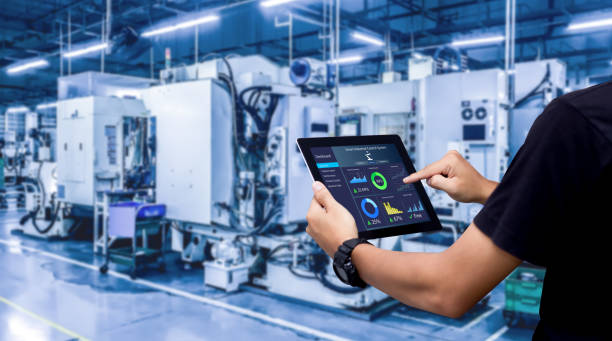Sonic Holograms: Touch-Free Haptic Feedback Reshapes Interface Design
The subtle vibration from your smartphone when receiving a notification. The satisfying click of a virtual keyboard. The intuitive resistance when scrolling through a document. Haptic feedback has become an essential part of our digital interactions, providing crucial physical context in our increasingly virtual world. But what if these sensations could exist in mid-air, without requiring any physical contact with devices? Welcome to the emerging world of sonic holograms – ultrasonic technology that creates tangible sensations in empty space, potentially revolutionizing how we interact with technology in ways that even science fiction hasn't fully imagined.
The Science Behind Touchable Air
Sonic holography, or mid-air haptics as it’s sometimes called, works through precisely controlled arrays of ultrasonic transducers that focus sound waves to create areas of high and low pressure in specific locations. When dozens or hundreds of these transducers work in concert, they can create concentrated points of acoustic radiation pressure that human skin can detect. The technology essentially tricks your brain into feeling something that isn’t physically there.
Unlike traditional haptic systems that require physical contact with a vibrating surface, sonic holograms can create tactile sensations floating several feet away from any device. These invisible force fields can be dynamically manipulated to simulate textures, boundaries, or movements, creating virtual objects you can “touch” without touching anything at all.
From Laboratory Curiosity to Commercial Reality
What began as academic research has rapidly evolved into commercial applications. Bristol-based Ultraleap (formerly Ultrahaptics) has emerged as an early leader, developing ultrasonic transducer arrays that can create complex haptic sensations in mid-air. Their technology has moved from proof-of-concept demos to integration partnerships with major automotive manufacturers like Jaguar Land Rover, who see potential for contactless dashboard controls that provide tactile confirmation without requiring drivers to take their eyes off the road.
The market is expected to grow substantially, with industry analysts projecting the broader non-contact haptics segment could reach $4.8 billion by 2026. This growth is being driven not just by automotive applications but also by consumer electronics, healthcare interfaces, and industrial control systems seeking ways to reduce physical touch points while maintaining intuitive user experiences.
Pandemic-Accelerated Development
The COVID-19 pandemic dramatically accelerated interest in touchless technologies across all sectors. What was once viewed as a futuristic convenience suddenly became an urgent public health consideration. Companies developing sonic holography found themselves fielding inquiries from industries they hadn’t previously targeted.
“The demand curve shifted forward by at least three years,” explains Dr. Marianna Obrist, Professor of Multisensory Interfaces at University College London, who studies applications of mid-air haptics. “Previously, businesses saw this as interesting but not essential technology. Now they’re approaching it as a necessary component of future interface design.”
Retail kiosks, elevator controls, and public terminal interfaces have become particularly interested application areas. McDonald’s has already begun testing drive-thru ordering systems incorporating sonic feedback in Sweden, allowing customers to “feel” menu selections without touching potentially contaminated screens.
Technical Challenges and Limitations
Despite rapid advancement, sonic hologram technology still faces significant challenges. Current systems require relatively large arrays of transducers to create precise sensations, making miniaturization difficult. Energy consumption remains high compared to traditional haptic motors, limiting battery-powered applications. And the fidelity of sensations, while improving, still can’t match the resolution of direct-contact haptic feedback.
Perhaps most significantly, the technology works best in controlled environments. Background noise, air currents, or even humidity variations can impact performance. This makes real-world implementation more complex than laboratory demonstrations might suggest.
“We’re not trying to perfectly replicate the sensation of touching a physical object,” says Tom Carter, CTO of Ultraleap. “Instead, we’re creating a new haptic language that users can quickly learn to interpret.”
That language is becoming increasingly sophisticated. Current systems can simulate various textures like roughness or smoothness, create sensation of resistance, and even mimic the feeling of manipulating virtual objects with realistic physical properties.
Beyond Buttons: Reimagining Interface Design
The most exciting aspect of sonic holography isn’t replacing existing interfaces but enabling entirely new ones. When interaction designers aren’t constrained by physical components, interfaces can become more dynamic, contextual, and spatial.
Researchers at the University of Sussex have demonstrated systems that can create volumetric haptic shapes – three-dimensional objects you can feel from multiple angles without seeing anything physical. This opens possibilities for accessibility tools for visually impaired users, enhanced gaming experiences, or industrial design applications.
In medical settings, sonic holograms could allow surgeons to “feel” tumors or anatomical structures rendered from imaging data before performing procedures. Automotive safety systems might use tactile alerts that guide a driver’s hands in emergency situations rather than just providing visual or auditory warnings.
The price range for developing custom sonic holographic interfaces remains high – typically $20,000-100,000 depending on complexity – but costs are falling as core technology components become standardized. Consumer products incorporating basic versions of the technology could appear within the next two years at premium price points around $2,000-5,000, according to industry forecasts.
The Invisible Interface Future
As we move toward ambient computing environments where technology fades into our surroundings, interfaces that don’t require dedicated physical hardware become increasingly valuable. Sonic holograms represent one piece of a broader shift toward multimodal, spatial computing that combines voice, gesture, and now mid-air haptic feedback.
What makes this technology particularly significant is how it bridges the gap between the digital and physical worlds. Unlike augmented reality visuals that overlay digital information onto our view of reality, sonic holograms add physical sensation to digital interactions – something that even the most advanced visual displays can’t provide.
As we continue developing these systems, the line between touching something real and something virtual will continue to blur. The question isn’t whether sonic holograms will become part of our technological landscape, but rather how quickly they’ll transform from novelty to necessity in the way we design human-computer interactions.






